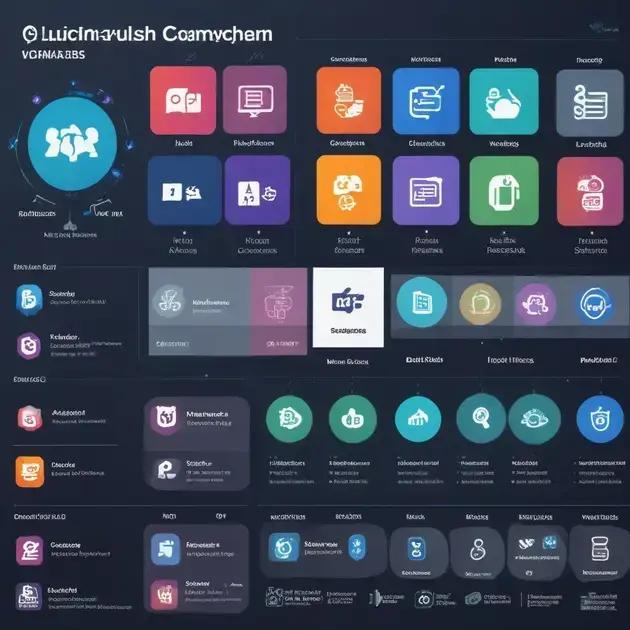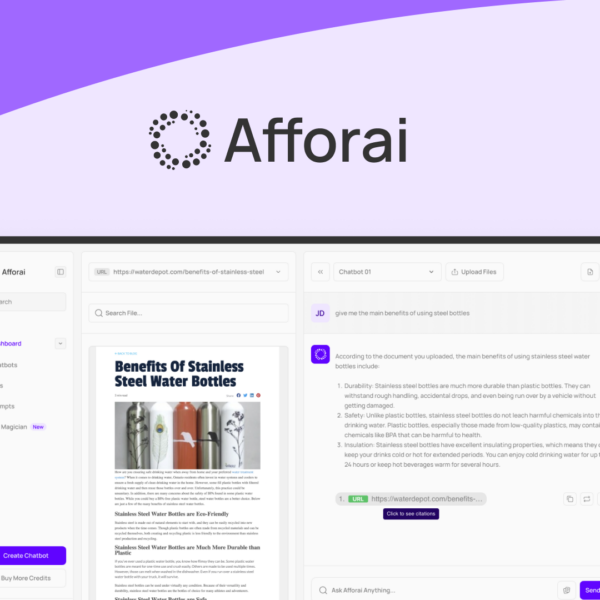Branding software is essential for businesses seeking to enhance their brand identity and consistency. It offers tools for logo design, digital asset management, and collaboration, ultimately boosting customer engagement and streamlining marketing efforts.
Branding software is becoming increasingly vital for businesses aiming to elevate their brand identity. In a market saturated with competition, utilizing effective branding solutions can drastically enhance your reach and customer engagement. This article delves into the various types of branding software available, its benefits, and crucial tips for successful implementation.
What is Branding Software?
Branding software refers to tools and platforms designed to help businesses create, manage, and enhance their brand identity. These tools can simplify various aspects of branding, from visual design to social media management and consistent messaging across different channels. By utilizing branding software, companies can ensure that their brand is represented accurately and appealingly, leading to a stronger connection with their audience.
Key Features of Branding Software
Many branding software solutions offer features such as logo design tools, color palette generators, and font libraries. Some even provide templates for creating marketing materials, including brochures, business cards, and social media graphics. These features enable businesses to maintain consistency in their branding efforts.
The Importance of Branding Software
In today’s digital landscape, having a strong brand presence is crucial for success. Branding software helps businesses by providing the necessary tools to create a unique identity that stands out from competitors. With effective branding, companies can foster customer loyalty, enhance their market perception, and ultimately drive sales.
Benefits of Using Branding Software

Using branding software can greatly enhance your business’s visibility and recognition in your target market. One key benefit is that it helps maintain brand consistency across various platforms, ensuring that every customer touchpoint reflects the same image and message.
Streamlined Brand Management
Branding software provides tools that enable businesses to manage logo usage, color schemes, and fonts easily. This streamlined approach ensures that all marketing materials align with the brand’s identity, which is crucial for developing a strong and cohesive presence.
Enhanced Collaboration
When multiple team members work on branding projects, branding software facilitates better collaboration. Team members can share ideas, receive feedback, and make adjustments in real-time, which leads to more effective outcomes and consistent branding efforts.
Measurement and Analytics
Many branding software solutions come with analytics features that allow businesses to track the performance of their branding efforts. By evaluating engagement metrics and customer feedback, companies can fine-tune their strategies and make informed decisions to enhance their brand’s effectiveness.
Cost-Effectiveness
Investing in branding software can be more budget-friendly compared to hiring external branding agencies. With the right tools, businesses can create professional-quality designs and marketing materials in-house, saving both time and money.
Improved Customer Engagement
As branding software helps create a cohesive visual identity, it also fosters improved customer engagement. A well-defined brand presence attracts customers, builds trust, and encourages loyalty, ultimately leading to increased sales.
How to Choose the Right Branding Software
Choosing the right branding software is crucial for your business. With so many options available, it can be overwhelming to find the best fit for your needs. Here are some important factors to consider when selecting branding software.
Identify Your Needs
Start by assessing your branding requirements. Determine if you need tools for logo creation, social media management, or market research. Knowing exactly what features you require will help you narrow down your choices.
Evaluate User-Friendliness
Look for software that is easy to use. A user-friendly interface can significantly reduce the learning curve. If the software is too complicated, it may hinder productivity rather than enhance it.
Consider Integration Capabilities
Check if the branding software integrates well with your existing tools and platforms. Seamless integration allows for better workflow management and can enhance overall efficiency.
Read Reviews and Testimonials
Research reviews and testimonials from other users. Understanding their experiences can provide insights into the software’s performance, reliability, and customer support.
Trial Options
Look for software that offers a free trial or a demo version. This allows you to test the features and functionality before committing to a purchase. A hands-on experience can help you see if the software meets your expectations.
Top Branding Software Options Available

There are several branding software options available that cater to different business needs. Each tool offers unique features that can help enhance your brand identity and marketing efforts.
Canva
Canva is a popular choice for creating stunning graphics and marketing materials. It offers a user-friendly interface with a wide range of templates for social media posts, presentations, and more. Canva’s drag-and-drop functionality makes it easy for anyone to create professional designs.
Adobe Spark
Adobe Spark provides powerful tools for creating graphics, web pages, and video stories. With templates and easy customization options, businesses can maintain a consistent brand look while leveraging Adobe’s rich ecosystem of creative tools.
Looka
Looka specializes in logo design and brand kits. By answering a few questions about your preferences, Looka generates a logo and brand style guide tailored to your business. This software is great for startups and small businesses looking to establish their brand quickly.
Brandfolder
Brandfolder is a digital asset management platform that allows businesses to store, manage, and share brand materials efficiently. The software aids teams in keeping track of logos, images, and other branding assets, ensuring consistency across all marketing channels.
Visme
Visme is a versatile branding tool that enables users to create presentations, infographics, and other visual content. With numerous templates and design assets, businesses can create a cohesive brand presence across various formats.
Tips for Successful Branding Software Implementation
Successful implementation of branding software requires careful planning and execution. Here are some tips to guide you through the process.
Define Clear Objectives
Before starting, establish clear goals for what you want to achieve with the branding software. Whether it’s improving design efficiency or maintaining brand consistency, having defined objectives will help you stay focused throughout the implementation process.
Involve Your Team
Engage your team from the beginning. Involving employees in the decision-making process encourages buy-in and ensures that everyone understands the benefits of the new software. Collaborative input can also lead to better outcomes as different team members bring various perspectives.
Provide Training
Offer comprehensive training for all users. Ensure that employees understand how to use the software effectively. Providing training sessions and resources can help them feel confident and skilled in utilizing the new tools.
Start with a Pilot Project
Consider launching a pilot project to test the software before full-scale implementation. Choose a specific team or campaign to trial the new branding software. This allows you to identify any issues and gather feedback for improvement.
Monitor and Adjust
Once the software is implemented, regularly monitor its performance. Collect feedback from users and make necessary adjustments to enhance usability. Continuous assessment ensures the software meets your branding needs effectively over time.
In Conclusion: Harnessing the Power of Branding Software
Using branding software effectively can significantly enhance your business’s brand identity and market presence. By choosing the right tools and implementing them successfully, you can streamline your branding efforts, foster team collaboration, and achieve consistent messaging.
Remember to set clear goals, involve your team, and provide adequate training to maximize the benefits of your chosen software. With these strategies, your business can stand out and create a lasting impression on customers.
Embrace the potential of branding software to not only elevate your brand but also drive growth and success in the competitive marketplace.
FAQ – Frequently Asked Questions about Branding Software
What is branding software?
Branding software includes tools designed to help businesses create and manage their brand identity, including logos, colors, and marketing materials.
How can branding software benefit my business?
It can enhance brand consistency, streamline design processes, and improve customer engagement, ultimately driving sales and brand loyalty.
What features should I look for in branding software?
Look for user-friendly interfaces, integration capabilities, collaboration tools, and analytics features to measure performance.
Is training necessary for using branding software?
Yes, providing training for your team is crucial to ensure they understand how to use the software effectively and maximize its benefits.
Can I test branding software before committing to it?
Many branding software options offer free trials or demos, allowing you to explore their features and suitability for your needs.
What are some top branding software options?
Popular options include Canva, Adobe Spark, Looka, Brandfolder, and Visme, each offering unique features tailored to different branding needs.




